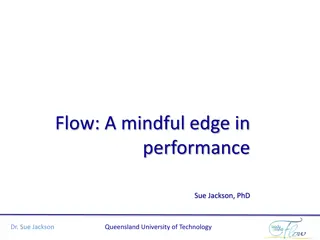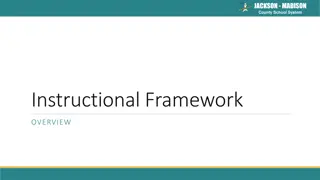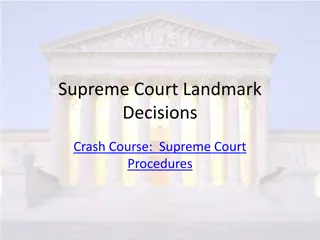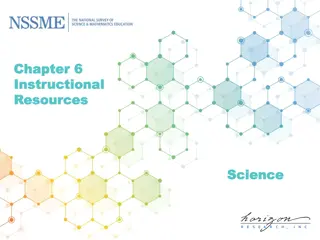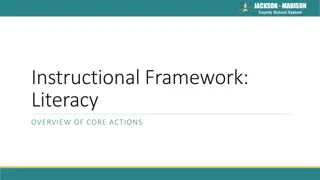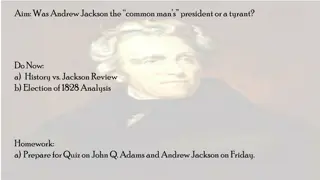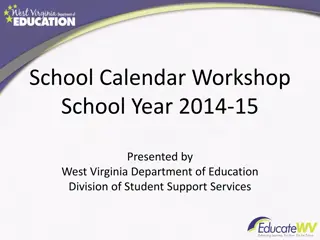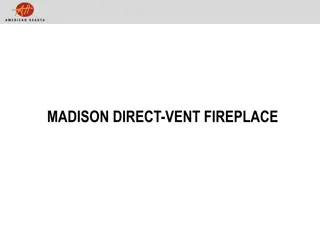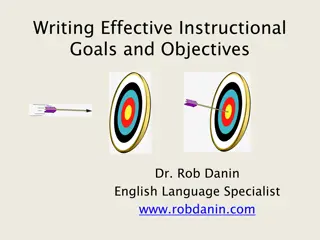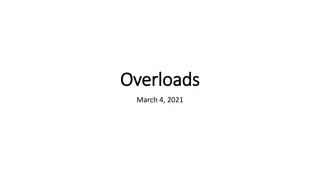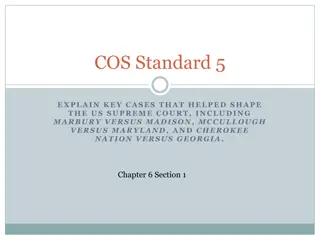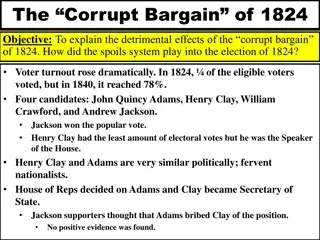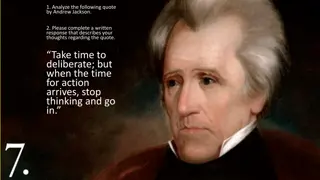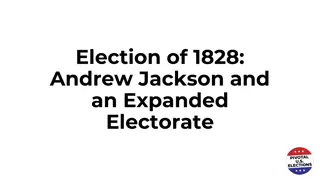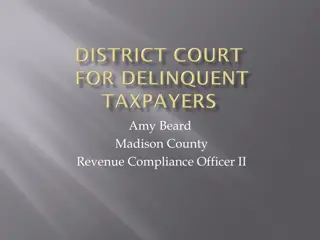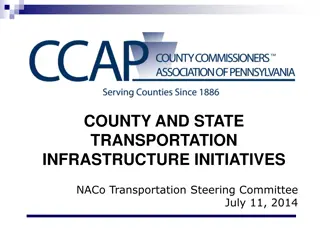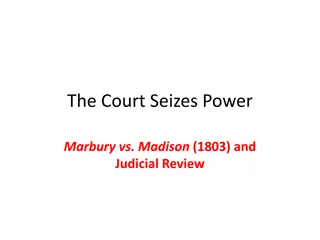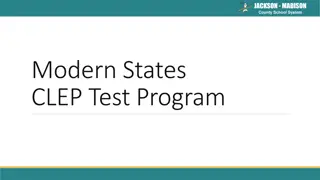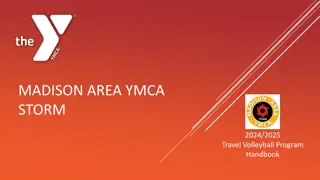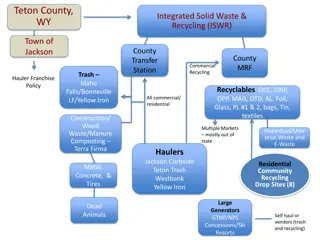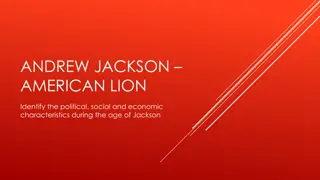Jackson-Madison County School System Instructional Framework Overview
The Jackson-Madison County School System is focusing on a research-based plan to improve instruction in every classroom. Their priorities include curriculum, lesson structures, and authentic literacy. By emphasizing these aspects, they aim to provide quality education across all socioeconomic backgrounds. The district started a renewed emphasis on curriculum in fall 2017, focusing on math and ELA. Effective teaching methods are being aligned with the curriculum, aiming to decrease variability in instruction quality. Authentic literacy, integrating reading, writing, and discussion, is seen as crucial for student success and is being integrated into all subjects except math.
Download Presentation

Please find below an Image/Link to download the presentation.
The content on the website is provided AS IS for your information and personal use only. It may not be sold, licensed, or shared on other websites without obtaining consent from the author. Download presentation by click this link. If you encounter any issues during the download, it is possible that the publisher has removed the file from their server.
E N D
Presentation Transcript
JACKSON - MADISON County School System Instructional Framework OVERVIEW
JACKSON - MADISON County School System Our Plan Moving Forward We will successfully advance our priorities and meet our goals as a district if we rely on a research-based, experience proven plan for improving instruction in every classroom. Centered on: What We Teach (Curriculum) How We Teach (Lesson Structures) Authentic Literacy These three things a content rich curriculum, sound lessons, and purposeful reading, writing and talking if even reasonably well-executed, would have more impact than all other initiatives combined .would wholly redefine what public schools can accomplish with children of every socioeconomic stratum. Schmoker, Focus, 2011.
JACKSON - MADISON County School System What We Teach Curriculum may be the single largest factor that determines how many students in a school will learn. (Marzano, 2003) Fall 2017: Began a renewed emphasis on getting our curriculum right Math, K-12 ELA K-2 and pilot in 3-12 All other content areas focusing on incorporating text every day We must decrease the variability of the quality of materials from room to room, school to school. Started walk-throughs with the Instructional Practice Guide (IPG) Tool focused on ensuring fidelity to implementation of high quality instructional materials
JACKSON - MADISON County School System How We Teach Effective teaching is not some complex combination of talent, technique, or long experience anyone can immediately implement the most essential, common elements of good teaching with success and get better at them with practice. (Schmoker, 2011) Identifying research-based, time-proven aspects of effective instruction We must decrease the variability of the effectiveness of instruction from room to room, school to school. Directly aligns with our curriculum work and complements the IPG indicators
JACKSON - MADISON County School System Authentic Literacy The clearest differentiator in reading between students who are college ready and students who are not is the ability to comprehend complex texts. (ACT, Reading Between the Lines, 2006) Authentic literacy is purposeful reading, writing, and discussion about texts in order to build skills and knowledge. Will be accomplished by the texts and tasks in the new ELA curriculum Must be integrated into all other subjects (except math) Literacy is the spine that holds all of this together. Every person in our district is a reading teacher. Unless you are a math teacher, your class should include one or multiple texts every single day. Improving literacy is an educational issue, an economic issue, and a moral issue.
JACKSON - MADISON County School System Instructional Framework Starter Engagement Ending HOW IPG IPG IPG W H A T Core Action 1 Core Action 1 Core Action 1 Core Action 2 Core Action 2 Core Action 2 Core Action 3 Core Action 3 Core Action 3
JACKSON - MADISON County School System The How : Starter, Engagement, Ending Measuring The What : Core Actions 1, 2, and 3 of the IPG
JACKSON - MADISON County School System IPG Walkthroughs Core Action 1: Use of complex text Core Action 2: Text-based tasks that meet the standards Core Action 3: Fully engaging students with tasks Majority of classrooms weren t getting to Core Action 3 The key to student growth is meeting all 3 How do we effectively combine what we are teaching and how we are teaching?
JACKSON - MADISON County School System The How STARTER, ENGAGEMENT, ENDING
JACKSON - MADISON County School System
JACKSON - MADISON County School System Starter
JACKSON - MADISON County School System Starter: Overview Greeting Focusing Activity Objectives and Agenda
JACKSON - MADISON County School System Greeting Teacher greets students as they enter with a smile Why? Helps to build relationships Communicates expectations as students enter the room Identify any problems or difficult situations with individual students
JACKSON - MADISON County School System Focusing Activity Learning begins when students enter the room A focusing activity (bell-ringer, do now, etc.) is posted or ready for students before they enter 3 to 5 3 to 5 questions of increasing complexity answered, or 3 to 5 sentences written The focusing activity is related to a previous or the current lesson All students are seated and begin work without direction from the teacher The focusing activity is reviewed or discussed Why? Maximize the use of instructional time (bell-to-bell instruction) Communicates a sense of urgency Helps students to transition seamlessly from the hallway and builds positive behaviors and constructive habits by teaching students to transition from hallway state to learning state Reduces variables in a student s day (students know what is expected of them) Reduce classroom management issues and enhance relationships by reducing non-positive interactions ( nagging them to get started) between teachers and students
JACKSON - MADISON County School System Objectives and Agenda Current learning objectives and agenda for the class are posted & communicated Based on the standard(s) being taught Why? Define the major chunks of your lesson Students are able to identify the what of the lesson Students know where the class is headed and perceive a structured environment with expectations Structure fosters a sense of safety and security
JACKSON - MADISON County School System Starter: Recap Greeting Focusing Activity Objectives and Agenda
JACKSON - MADISON County School System Engagement
JACKSON - MADISON County School System Engagement: Overview Chunking Gradual Release Teacher Talk and Student Work
JACKSON - MADISON County School System Chunking Utilized to break lessons into small segments in order to provide frequent feedback and identify any areas that need re-teaching Why? Big chunks/segments of the lesson are organized around your learning objectives and agenda Ensures each portion of the lesson is manageable and not too long Allows you to formatively assess each chunk/segment/objective
JACKSON - MADISON County School System Gradual Release This process is within a single chunk or segment of the lesson I do We do You do (small chunk alone or in pairs while teacher formatively assesses/checks for understanding and re-teaches as needed) You do alone (independent practice to display mastery) There will be multiple cycles of this process in one lesson Why? Opportunity for modeling Allows you to get immediate feedback Before fully releasing students to the full task, you can test out a small chunk By actively engaging students, teachers create a feedback loop that allows you to spot errors as they occur and correct them. Daniel Goleman
JACKSON - MADISON County School System Teacher Talk and Student Work During all parts of the lesson (each chunk), one of two things is happening the teacher is talking or students are working: Students are actively engaged with the teacher or other students (Avoid the void) Teacher Talk: Cold calling, life-lines, no opt-outs Students SLANT Sit up, Lean Forward, Ask and Answer Questions, Note Key Information, and Track the Speaker Students Working: Teacher purposefully circulates and utilizes Praise, Prompt, and Leave to check for understanding and provide feedback Can you reach every student in 8 steps? Working in pairs is given preference over small groups due to increased engagement opportunities Think, Write, Pair, Share No Teacher SAD (Sitting at Desk) Why? There is a purpose to all parts of the lesson. You communicate that by questioning/checking. The brain that does the work does the learning. David C. Sousa Increased student engagement and opportunities to respond relate to increased academic achievement, increased on-task behavior, and decreased behavioral challenges. Anita Archer When a vacuum exists negativity will enter. Avoid the void. Anita Archer
JACKSON - MADISON County School System Engagement: Recap Chunking Gradual Release Teacher Talk and Student Work
JACKSON - MADISON County School System Ending
JACKSON - MADISON County School System Ending: Overview Closing Assessment Time-Keeping Strategy
JACKSON - MADISON County School System Closing Assessment Brings closure to the lesson Teacher uses formative assessments to: Inform instruction: What do I teach tomorrow? Target review: What do I need to reteach? Focus remediation/enrichment: Which students need remediation or enrichment? 3 to 5 3 to 5 questions answered, or3 to 5 sentences written to determine if students mastered the objectives communicated at the beginning of the lesson Why? Provides feedback to the teacher did you teach what you intended to teach and have the students learned what you intended them to learn? Assess progress on the objectives you set at the beginning of the lesson Reduces forgetting and improves retention long-term memory by up to 50 percent Opportunity to reinforce the key concepts/ideas within the lesson Opportunity for students to reflect and draw conclusions Leads to higher-order thinking Creates an opportunity to smoothly transition from one lesson to the next lesson
JACKSON - MADISON County School System Time-Keeping Strategy Teacher has identified a time-keeping strategy Why? One less thing to think about! Make sure you build in time for your closing assessment Ensure mastery is assessed
JACKSON - MADISON County School System Ending: Recap Closing Assessment Time-Keeping Strategy
JACKSON - MADISON County School System
JACKSON - MADISON County School System Combining the What and the How
JACKSON - MADISON County School System Combining the What and How The components of Starter, Engagement, and Ending (S-E-E) work together with the IPG Core Actions to complete our Instructional Framework. The How and the What Moving forward, this is our Instructional Framework!
JACKSON - MADISON County School System Walk-through at the beginning of your class The Starter would be the focus, along with the 3 Core Actions of the IPG 1 2 3
JACKSON - MADISON County School System Walk-through in the middle of your class Engagement would be the focus, along with the 3 Core Actions of the IPG 1 2 3
JACKSON - MADISON County School System Walk-through at the end of your class The Ending would be the focus, along with the 3 Core Actions of the IPG 1 2 3
JACKSON - MADISON County School System What kind of feedback will I get? You ll receive feedback on the how and the what The How : Starter, Engagement, Ending Depending on which point in the lesson is seen during the walk-through, you ll get a piece of feedback on a component from the Starter/Engagement/Ending section. Measuring The What : Core Actions 1, 2, and 3 of the IPG You ll also get a piece of feedback on how far your lesson progressed on the IPG
JACKSON - MADISON County School System What kind of feedback will I get? Example scenario: A walk-through happens at the beginning of a class. The focusing activity consists of 3 questions about a text the class read yesterday and the lesson jumps immediately from the focusing activity to a time of direct instruction. A walk-through will receive 2 pieces of feedback one on the how and one on the what : Feedback on the How : Emphasizing the importance of taking a couple of minutes to communicate the lesson s objectives and a basic agenda for the the class. Feedback on the What : Most of the questions from the focusing activity can be answered without any evidence from the text, so Core Action 2, Indicator B is identified as a place to strengthen.
JACKSON - MADISON County School System Example of a blank feedback form for a coaching conversation
JACKSON - MADISON County School System Working Our Plan By improving our what and our how while emphasizing literacy in all areas, we will meet our goals. This is it. We must pursue these and not compromise their simplicity, clarity, and focus.
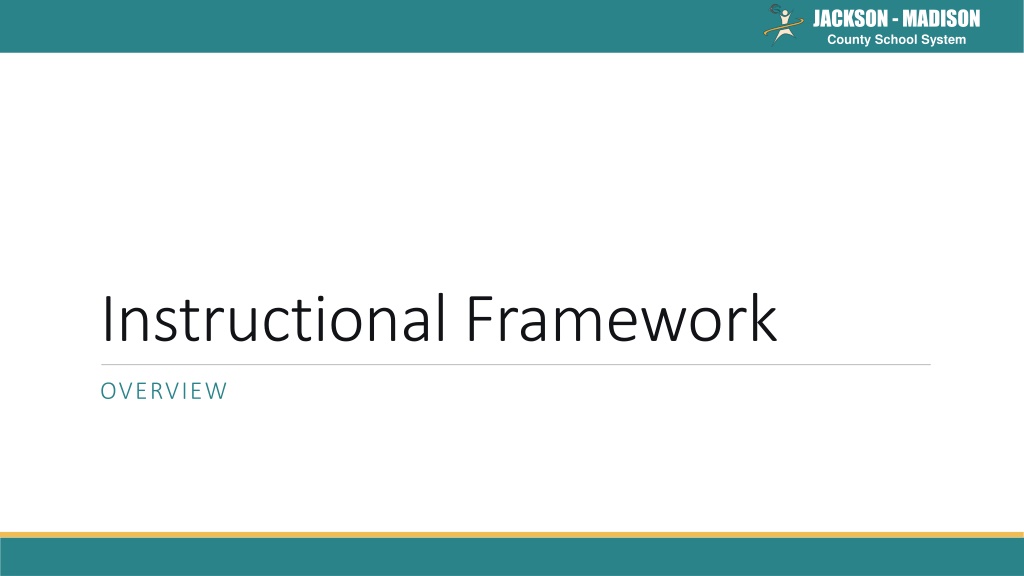
 undefined
undefined




